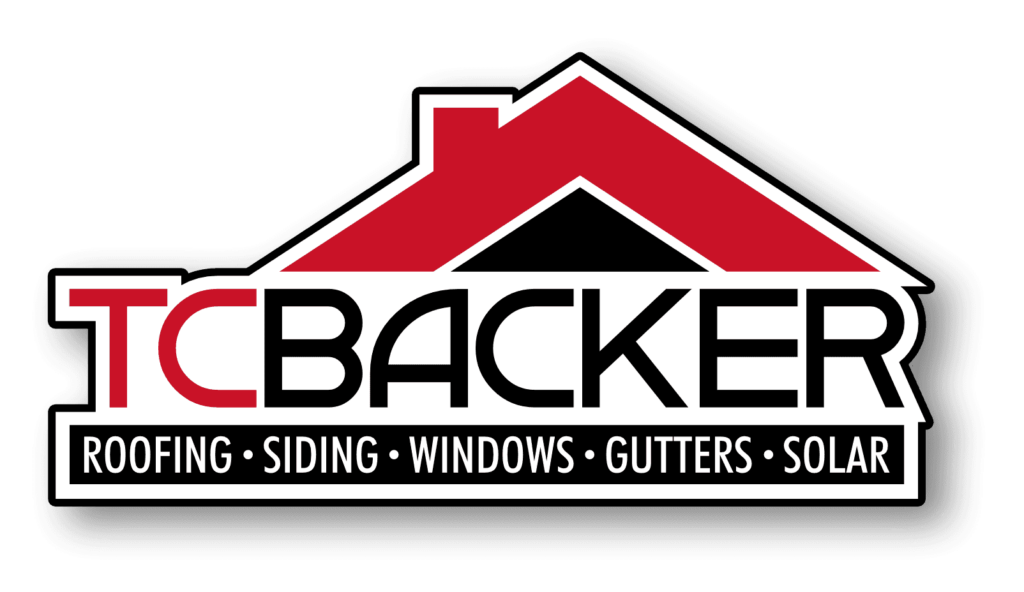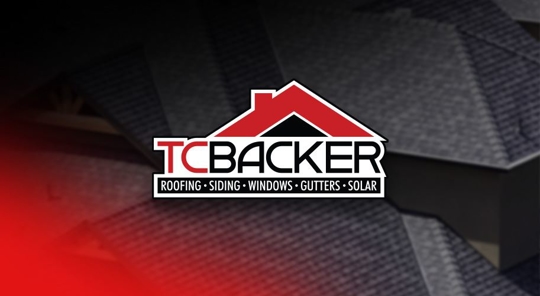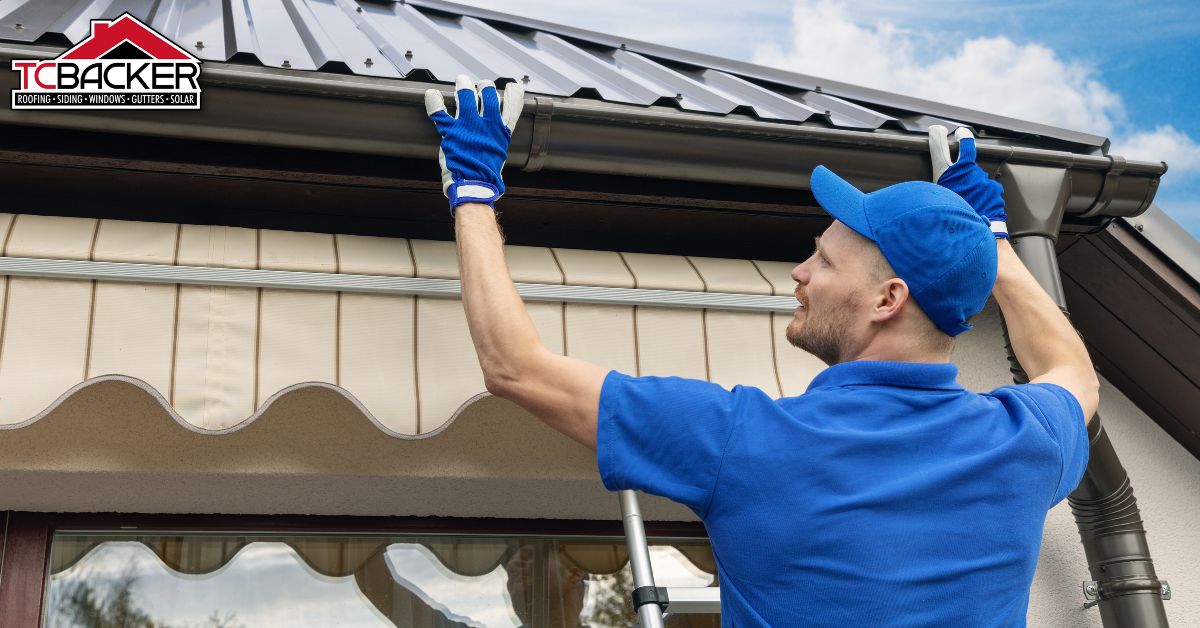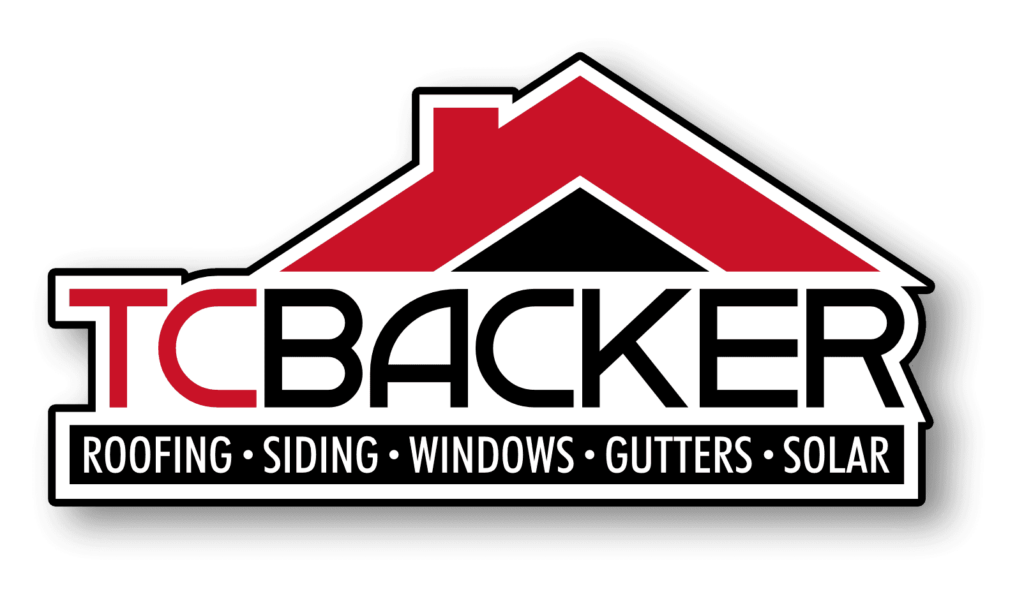Metal Roof Types for Your Home
Why Should You Consider Metal Roofing for Your Home?
Metal roofs are becoming more popular among homeowners because they are better in many ways than traditional roofs like shingles or tiles. Metal roofs last much longer and can handle more extreme weather than other materials. They are also more energy-efficient, which means they can assist in keeping your home cooler in the summer and warmer in the winter.
The lifespan of a metal roof is 50 years or more, with only minor maintenance and repairs. It can withstand wind speeds up to 140 mph and will not rust or break as the seasons change. A metal roof is also fire-resistant and saves energy, lowering your cooling costs by 10–25%. Even when it rains, a metal roof makes no more noise than a traditional roof.
Exposed Fastener Panel Alternatives
Max-Rib
Exposed fastener roofing is the most cost-effective of the various metal roofing styles. This type of roofing consists of panels that overlap and are directly attached to the roof deck or framing. Once installed, the heads of the fasteners are visible, but they have typically been painted the same color as the roofing panels to blend in. Since most exposed fastener panels are 36 inches wide, less labor is required to cover the roof because fewer panels are needed.
Max-Rib is a low-profile panel widely used in residential applications. It has an appealing aesthetic and a reasonable price, making it popular among homeowners. This panel profile is also commonly used in the business world, and many manufacturers offer different steel substrates and coatings. Homeowners should ensure that the product they put on their property will work well in the long run.
Standing Seam Systems
A concealed fastener panel is a standing seam roof system. They use a series of adjoining panels joined together by raised seams. The height of the seams varies, but they are typically 1 to 2 12 inches tall. This enables the panels to snap together with no visible fasteners. Standing seam roofs, in addition to providing a sleek, modern appearance, Allow panels to expand and contract in response to temperature changes.. This extends their life and reduces wear and tear on the roof deck. Most standing seam panels for residential applications snap together, while others require mechanical seaming. Mechanically seamed panels have higher strength and wind uplift capabilities.
Meridian
Meridian standing seam roof panels offer several benefits that make them an excellent choice for your next roofing project. Their snap-together design is aesthetically pleasing and makes installation quick and easy. In addition, Meridian panels require no clips or other fasteners and are attached directly to the roof deck with pancake head fasteners. This makes them a cost-effective and practical option for any roofing project.
Metal Shingles and Tiles
These systems are a popular option for homeowners looking for a roofing solution that mimics the appearance of other roofing materials. They combine the aesthetic look and curb appeal of traditional shingles, clay tile, cedar shake, and slate with all of the performance benefits of metal. The homeowner gets the glance they want and all of the benefits of metal roofing, such as its durability, energy efficiency, and resistance to damage from the weather.
Different types of metal
Aluminum
Aluminum is an excellent metal for roofing because it is lightweight and durable. It is also corrosion-resistant, making it a perfect choice for coastal applications and other areas where steel may rust. Aluminum has a long lifespan, making it a wise investment for homeowners. In 1885, the first building to use aluminum was the top of the Washington Monument. At the time, it was easy to get aluminum out of bauxite and make building-grade aluminum alloys so that aluminum could be used as a building material. Before that, aluminum had been considered a precious metal.
Almost all aluminum roof systems are now pre-painted, and aluminum can be. Because of its high malleability and heavy forming, aluminum lends itself well to more heavily formed products, which add structural strength. Aluminum roofing is typically composed of a high proportion of recycled material, the vast majority of which is post-consumer material such as used beverage cans.
Aluminum roofing typically contains 90–95 percent recycled material. One square of.019″ thick aluminum roofing can reuse up to 1,152 aluminum beverage cans, effectively closing the recycling loop for the consumer. American Metal Roofs has several aluminum product lines to choose from. Many homeowners quickly determine that residential aluminum roofing is the best option.
Advantages: Lightweight, rust-free, attractive, and energy-efficient.
Disadvantages: More expensive than steel. Not as hail-resistant, particularly in less-formed profiles.
Thicknesses: 019″ for the shake, shingle, and tile. Minimum .032″ for standing seam and some heavier tile profiles.
Weight: As low as 45 lbs. per square.
Recycled Content: Usually around 95% (primarily post-consumer).
Stone-coated Steel Roofing
Stone-coated metal roofs are beautiful, but if you want the best top for your home, you should understand how they were made and how they compare to other metal roofing options.
In the 1950s, Australia and New Zealand used stone-coated steel roofing. After metal roofing panels were formed, a process was developed to bond “stone” coatings. Road tar initially bonded the board and small stones. In the 1960s and 1970s, thousands of roofs failed due to premature coating failure.
Stone coat roofing products are made of galvalume or galvanized steel panels with granules or stones glued to them. The water-based acrylic resin “glue” softens with time. Stone-coated roofing can be scraped off by soaking it in warm water for 20 seconds.
The bonding agent breaks down as stone-coated products weather. Granules separate from panels as bonding resin breaks down, allowing more water in. Moisture penetrates polish and reaches steel.
Corrosion and rust cause large patches of stones to separate from the steel panels. These roofs can be repaired in the field with granules and glue. The homeowner has a rapidly failing roof without rust or granule loss warranty coverage.
Stone-coated steel roofing has two more factors. Battens with exposed fasteners install these products. Natural expansion-contraction cycles loosen and pull out exposed fasteners quickly. Thousands of loose fasteners let water through the roof panels and decking.
Concealed fasteners only interlock on the top and bottom of stone-coated roofing panels, leaving the sides open to wind and weather—another drawback to fully interlocking metal roofing systems.
Galvalume Steel
Galvalume steel is aluminum-zinc-coated carbon/iron steel. Zinc amplifies aluminum’s pros and cons. Galvalume steel is corrosion-resistant because the aluminum/zinc alloy provides barrier protection instead of galvanic. Aluminum itself is corrosion-resistant. However, aluminum in galvalume steel neutralizes zinc’s galvanic properties, preventing it from protecting itself against cracks and other flaws.
Tension bend staining affects galvalume steel more. When steel is formed into metal roofing profiles, the galvalume zinc/aluminum and galvanized zinc coatings are spread very thin over deep folds and tight bends, causing microscopic cracks. Zinc’s galvanic action protects galvanized steel from these scratches.
Tension bend staining occurs when moisture or other corrosive elements enter these cracks and cause rusting—Rust “stains” form in folds and bends. Corrosion under the metallic coating will worsen over time.
Because it bends less, galvalume steel is often used in simple metal roof styles like a standing seam. Galvalume steel, which is more corrosion-resistant than galvanized, is sometimes installed unpainted or with a cheap acrylic clear coat. Homeowners who like the metallic look have chosen unpainted galvalume. Like galvanized, most galvalume is painted for durability and beauty.
To prevent rusting, the metal roofing industry coats carbon/iron steel strips on both sides with a specific thickness of another metal or alloy. Steel is hot-dipped in molten metal. Hot-dipping outperforms electroplating in terms of cost and efficiency.
Steels are named after their metal. Galvanized zinc-coated carbon/iron steel. The coating metal shields galvanically. Galvanic protection protects base metal by sacrificing metal coating. Coating metal protects base metal.
Galvanized steel dominates metal roofing profiles. Most roofs cost more than galvanized steel. Zinc “band-aids” scratches on galvanized steel, preventing rust. Zinc protects and rust-proofs galvanized steel. Residential metal roofing systems typically use G-90 zinc thickness, which coats 0.90 ounces per square foot of steel. Avoid G-30 and G-60 galvanized steels for residential use. Check the manufacturer’s steel metallic coating thickness.
Zinc coating thickness—not steel thickness—is G-90. Thickness, measured in gauge number, depends on the steel metal roofing product’s profile (26 Gauge, 24 Gauge, etc.). Thinner metal is higher gauge.
Except for mill-finished shingles and other metal roof styles, galvanized steel systems have base paint. High-quality galvanized steel roofing products, especially shake, shingle, and residential tile systems, have a “post-forming” coat to prevent corrosion where the metal was reshaped during manufacturing. Coatings explains.
Avoid galvanized steel for coastal or corrosive homeowners. Salt spray and other elements corrode galvanized steel faster. Galvanized steel is good for residential products.
Copper
Copper roofs are often considered the most attractive. It was expensive. Copper is the priciest roofing metal (steel, aluminum, and copper, in increasing order of expense). Copper is commonly used for accents over bay windows, dormers, and other elegant areas. Copper is used in church steeples, cupolas, and historic structures. Standing seam panels and copper shingles are installed. In Classic, Copper Chateau Slate and Oxford Shingle are ideal for the applications mentioned earlier.
Copper flashing is used with other roofing materials. Copper roof panels are not recommended for aluminum or steel roofing. Most residential metal roofing systems have flashings, and copper in direct contact with a dissimilar metal accelerates its deterioration through galvanic action. As copper patinates, water runoff stains other metals, brick, concrete, and almost anything else it touches. Thus, it’s crucial to understand how water runoff from a copper roof is channeled off. Lead-coated copper can replace pure copper to solve this issue. Due to public outcry against lead-related building products, this is done less often.
The color of copper’s verdigris patina is its most notable feature. In coastal areas, salt spray accelerates patination. Copper’s longevity is due to the patina’s protection from corrosive elements. To get the rich, luxurious verdigris look, most homeowners let copper weather naturally.
Copper is soft and solders well. Copper-steel roofs last over 100 years. The US has used copper for centuries. The Massachusetts State House applied first. This project was one of Paul Revere’s first copper rolling mill orders in 1801.
Recent coating technology allows homeowners to choose copper-coated steel or aluminum roofing. Copper finishes range from bright “new” to fully weathered, as well as coatings that mimic patination. Classic aluminum roofing systems offer copper’s durability at a lower cost and come in several colors.
Other Exotic Materials
Rolling zinc, stainless steel, terne-coated steel, terne-coated stainless, and titanium are some other residential metal roofing materials. Roofs made from these more exotic metals are typically architect-specified and custom-formed by a fabricator for a specific application.
There are numerous styles to choose from.
Metal roofing can be styled to resemble standing seam, tile, shakes, or corrugated. The industry’s attractive metal roof styles constitute a significant benefit. There is a metal roof system for every home style!
Shake, Shingle, Tile, and Slate Profiles
In recent years, only “new metal roofs” like shake, shingle, tile, and slate profiles have been more popular than standing seam. These products offer metal roofing advantages and a classic look. Four “modular” panels vary in appearance and use. Four descriptions.
Metal shakes resemble hand-split cedar. These shake systems look like wood shakes and are durable, so homeowners like them. Other homeowners like these specialty metal shake systems’ unique appearance.
These modular panels are kept in place on the roof deck by a hidden clip system or shingle-top nailing flange. 2′ and 4′ x 1′ are typical. Staggered roof shingles and shingle facsimiles avoid vertical line repetition. Shake systems are more “high-profile” than shingle systems because they have more texture and dimension. The shingle’s thickness allows it to be installed directly over thin wood shingles. Metal shake shingles are usually 26– or 28–gauge steel or.019″ or.024″ aluminum. Steel metal shakes have post-forming stone or Kynar powder coats. This seals thin zinc or zinc/aluminum alloy coatings over tight bends. Classic Metal Roofing Systems offers aluminum shakes with post-forming coats for aesthetics, not functionality.
Some homeowners prefer metal shingles because they look like standard dimensional shingles and blend in with a more modest neighborhood. Shingle metal roof systems are made up of panels that are clipped or nailed to the roof deck, just like shake profiles. Metal tile profiles range from the elegant S-Serpentine to the exotic Mediterranean barrel tile. Most tile profiles are held together with exposed fasteners that go all the way through the tile, but some are held together with a batten grid on the roof deck. Most metal tile systems are large sheets from eave to ridge. Such systems have fewer seams and install faster, but waste can increase significantly. Steel, aluminum, and copper metal slate profiles mimic natural slate. Metal facsimile slate profiles are 30–50% cheaper than natural slate and much lighter, which can help older buildings last longer. Metal roofing comes in exotic shapes like diamonds, scallops, and flat tiles.
Standing Steam
Commercial and residential standing seam metal roofing is the most common profile. Standing seam has become so popular in recent decades that many assume “metal roofing” means standing seam. Standing seam roof profiles look modern and complement all home styles. However, roof dimensions determine the best standing seam metal roof. Residential roofs are usually smaller, more compact, and more complex than commercial roofs. Therefore, a standing seam roof with a panel width of 12 inches is best. Avoid more comprehensive panels when choosing a metal roof for a home because they make the top look commercial. Metal roofing can be made to look like a standing seam, tile, shakes, or corrugated. The industry’s attractive residential metal roofing profiles are an advantage. There is a metal roof system for every home style! The variety of profiles can also hurt the industry by causing unsuitable products to be used in inappropriate applications. The following section should help you choose the best product for your home, both aesthetically and functionally.
Standing seams can be through- or clip-fastened. Through-fastened standing seam systems use a “flange” to fasten panels. The panel conceals the fasteners driven through this flange. The clasp is hidden, but the panels are attached directly. These systems are cheaper, but since most quality residential standing seams are continuous panels custom-formed to the rafter length, using through-fastened panels on longer rafters is not recommended. Extended panels expand and contract more; they have fatigue fasteners, “wallow out” fastener holes, and oil cans. However, through-fastened panels are suitable for shorter runs like porch accents or bay windows.
Clip-system standing seam roof profiles are best for longer runs. The clip should be made of the same metal as the vertical seam or a non-galvanic metal like stainless steel. The roof deck clip lets the panels “float.”
This reduces oil canning and prolongs the system’s water tightness and aesthetics. A higher rib system is also recommended for longer or shorter runs downhill from longer roof runs. The rib gives the vertical seam dimension and joins the two adjacent panels. Higher ribs allow panels to carry water down the entire rafter length, preventing water from spilling over the boards and backing up under an overwhelmed rib or flashing.
Standing seam roofs are usually made of galvanized or galvalume steel and range in gauge from 18 for heavier structural products (rarely used residentially) to 26 or 28 for lighter projects. Residential steel standing seams are usually gauged 24 or 26. Classic’s ClickLock Premium Standing Seam is made of heavy gauge aluminum, ranging from 032″ to 050,” with 032″ being standard for residential applications.
ClickLock and other standing seam systems have a variety of ways to perform flashings. Flashings reduce installer error and ensure a watertight roof for decades. Accurate fixed seam systems require custom flashings to match the pitch and geometry of each top.
Sheet Roofing
Sheet metal roofs have “profiles.” “5V” Crimp, “R” Panel, corrugated roofing, face-fastened, through-fastened, or screw-down panels describe this metal roof style. Most metal sheet roofing is 24–30 gauge galvalume or galvanized steel.. Sheet roofing is different because it has large panels (or sheets) overlapping and visible fasteners. Overlapping panels are fastened to the roof decking, purlin, or spaced sheathing below. A neoprene washer seals the fastener head.
A common type of sheet roofing is the 5V Crimp pattern. Five small V-shaped crimps are on each panel. Other roof patterns made with corrugated sheets look more “wavy.” Some think any of these products look like they came from a farm or a small town.
Sheet roofing can either be painted or left unpainted. Sheet metal roofs are often chosen because they are cheaper, so the paints are usually of lower quality. This cuts costs even more for the whole system. In general, sheet roofing systems should be carefully examined before they are used on residential projects that need a roof that will last a lifetime. Sheet roofing outperforms most traditional roofing materials. It differs from more technologically advanced residential metal roofing options for homeowners investing in their homes.
Sheet metal roofing is the type of metal roofing that costs the least. It is also one of the most accessible metal roofs to put on. Sheet roofing only lasts as short as other types of metal roof systems in terms of how it works and looks.
The post Metal Roofing Options For Your Home, Types & Styles appeared first on TC Backer Construction.





